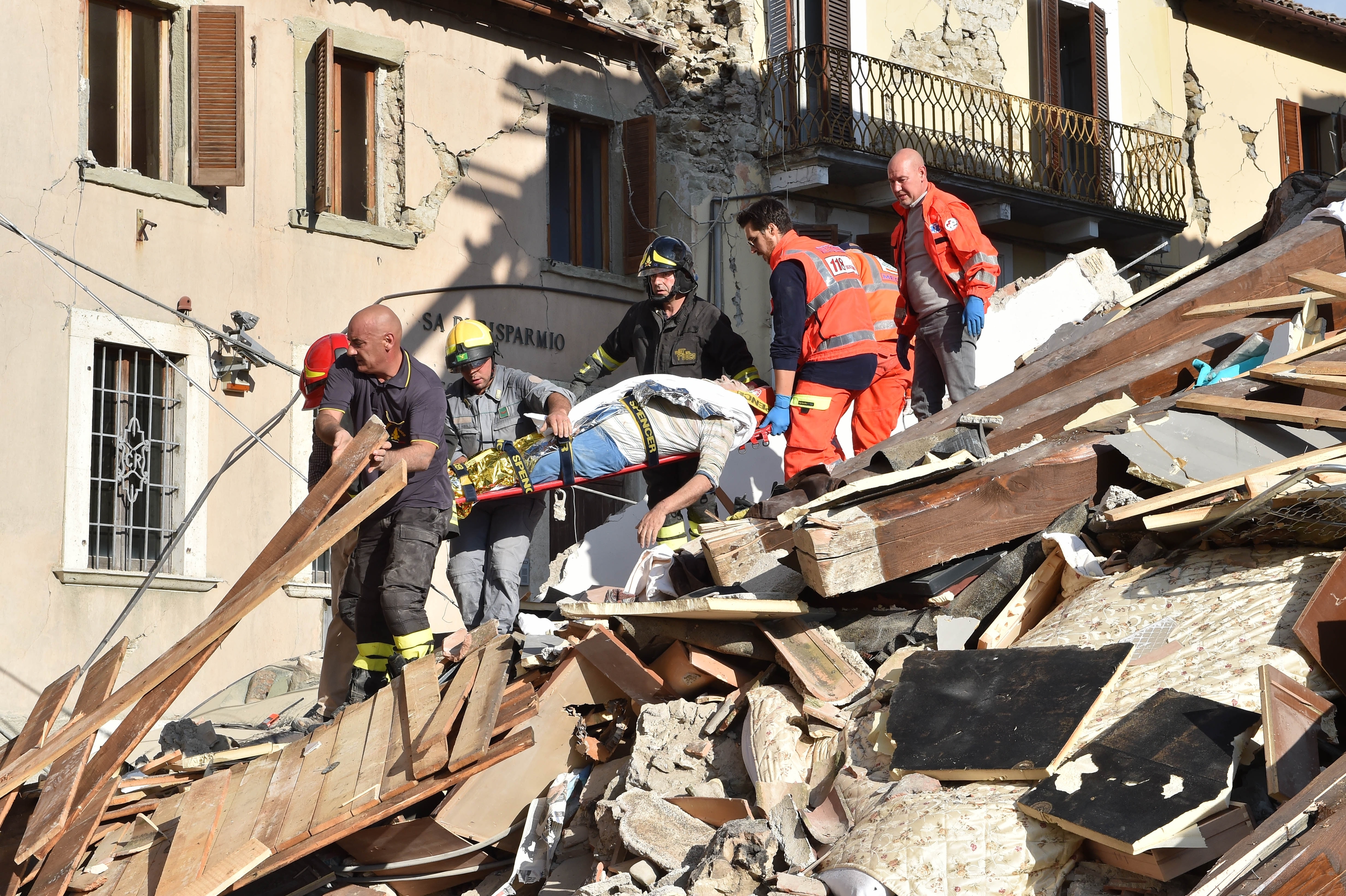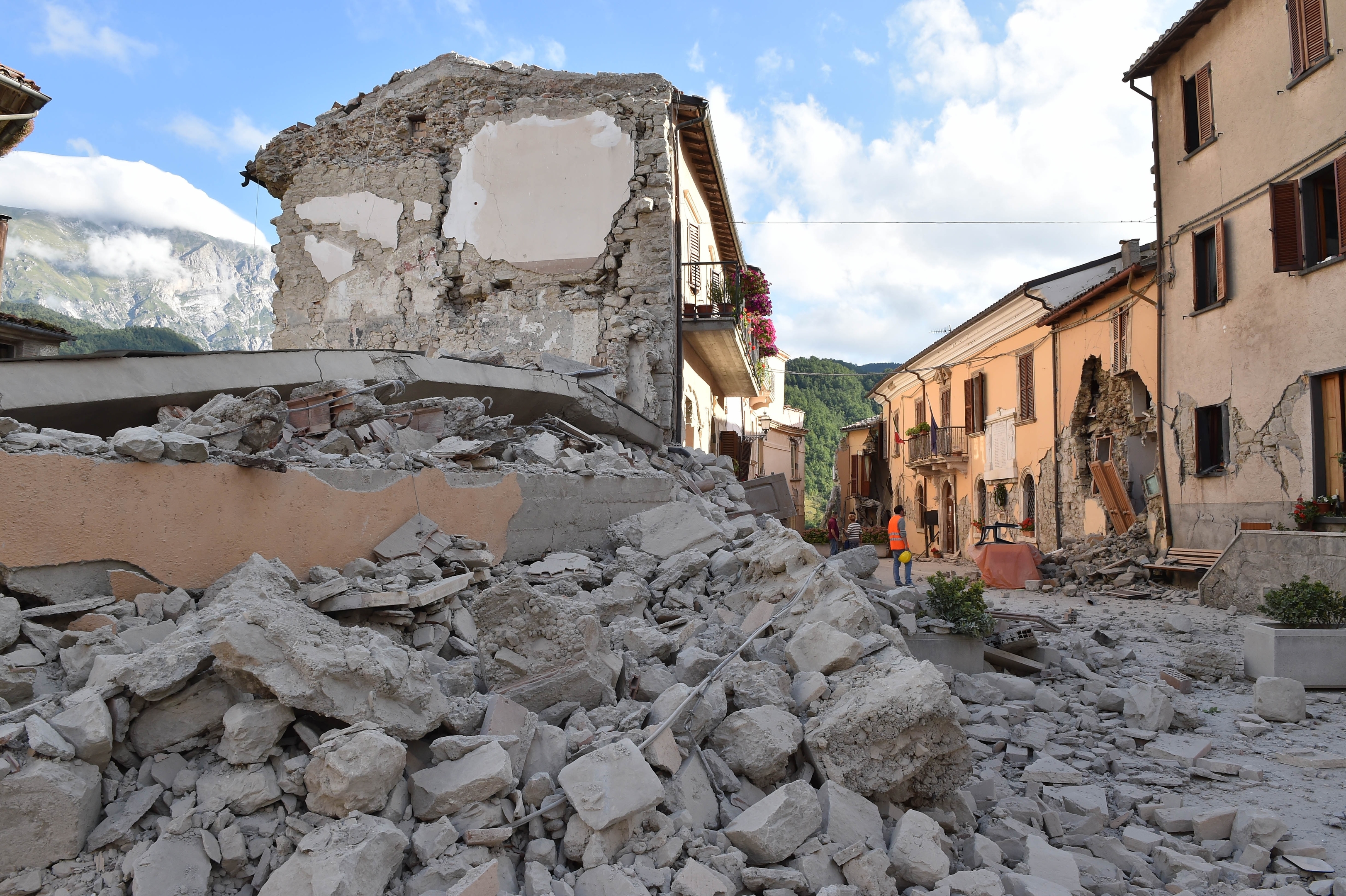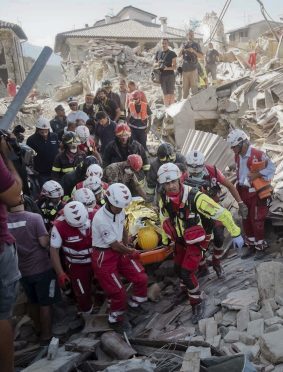Rescue crews are facing a race against time to dig out survivors from an earthquake that reduced three central Italian towns to rubble.
The death toll stood at 247 on Thursday morning, but the number of dead and missing was uncertain given the thousands of holidaymakers in the area for summer’s final days.
Residents woken before dawn by Wednesday’s temblor emerged from their crumbled homes to find what they described as apocalyptic scenes “like Dante’s Inferno“ with entire blocks of buildings turned into piles of sand and rock, thick dust choking the air and a putrid smell of gas.
“The town isn’t here any more,” said Sergio Pirozzi, the mayor of the hardest-hit town, Amatrice. “I believe the toll will rise.”

The magnitude 6.2 quake struck at 3.36 am local time on Wednesday and was felt across a broad swathe of central Italy, including Rome, where people woke to a long swaying followed by aftershocks.
The temblor shook the Lazio region and Umbria and Le Marche on the Adriatic coast, a highly seismic area that has witnessed major quakes in the past.
Dozens of people were pulled out alive by rescue teams and volunteers that poured in from around Italy, using bulldozers and often their bare hands.
In the evening, about 17 hours after the quake struck, firefighters pulled a 10-year-old girl alive from the rubble in Pescara del Tronto.
“You can hear something under here. Quiet, quiet,” one rescue worker said, before soon urging her on with: “Come on, Giulia, come on, Giulia. Watch your head.”
Cheers broke out when she was pulled out but there were wails when bodies emerged.

Premier Matteo Renzi visited the zone, greeted rescue teams and survivors and pledged that “no family, no city, no hamlet will be left behind”.
Worst affected were the tiny towns of Amatrice and Accumoli near Rieti, some 60 miles north east of Rome, and Pescara del Tronto, further east. Italy’s civil protection agency set up tent cities around each hamlet to accommodate the thousands of homeless.
Italy’s health minister, Beatrice Lorenzin, visiting the devastated area, said many of the victims were children: The quake zone is a popular spot for Romans with second homes and the population swells in August when most Italians take their summer holiday before school resumes.
The medieval centre of Amatrice was devastated, with the hardest-hit half of the city cut off by rescue crews digging by hand to get to trapped residents.
The city, birthplace of the famed spaghetti all’amatriciana bacon and tomato sauce, was full for this weekend’s planned festival honouring its native dish.
Officials initially said about 70 guests were staying at the hotel, but later lowered the number to about 35, many of whom escaped in time.
Carlo Cardinali, a local fire official taking part in the search efforts at the hotel, told Sky TG24 about 10 guests were still missing.
Among those killed was an 11-year-old boy who had initially shown signs of life. The fate of the dozens of other guests was not immediately known.
Amatrice is made up of 69 hamlets that teams from around Italy were working to reach with sniffer dogs, earth movers and other heavy equipment.
In the city centre, rocks and metal tumbled on to the streets and dazed residents huddled in piazzas as more than 200 aftershocks jolted the region throughout the day, some as strong as magnitude 5.1.
A woman, sitting in front of her destroyed home with a blanket over her shoulders, said she did not know what had become of her loved ones.
“It was one of the most beautiful towns of Italy and now there’s nothing left,” she said, too distraught to give her name. “I don’t know what we’ll do.”
As the August sun turned into a night-time chill, residents, civil protection workers and even priests dug with shovels, bulldozers and their bare hands to reach survivors.
A steady column of dump trucks brought tons of twisted metal, rock and cement down the hill and on to the highway toward Rome, along with a handful of ambulances bringing the injured to Rome hospitals.
Despite a massive rescue and relief effort, with army, Alpine crews, police, firefighters, Red Cross crews and volunteers, it was not enough: A few miles north of Amatrice, in Illica, residents complained that rescue workers were slow to arrive and that loved ones were trapped.
The US Geological Survey reported the quake’s magnitude was 6.2, while the Italian geological service put it at six and the European Mediterranean Seismological Centre at 6.1.
The quake had a shallow depth of between four and 10km, the agencies said. Generally, shallow earthquakes pack a bigger punch and tend to be more damaging than deeper quakes.
“The Apennine mountains in central Italy have the highest seismic hazard in Western Europe and earthquakes of this magnitude are common,” said Richard Walters, a lecturer in Earth sciences at Durham University.
The devastation harked back to the 2009 quake that killed more than 300 people in and around L’Aquila, about 55 miles south of the latest quake.
The town, which still has not fully recovered, sent emergency teams to help with the rescue and set up tent camps for residents unwilling to stay indoors because of aftershocks.
“I don’t know what to say. We are living this immense tragedy,” said tearful Amatrice parish priest the Rev Savino D’Amelio. “We are only hoping there will be the least number of victims possible and that we all have the courage to move on.”
Italy has requested EU satellite images of the whole area to get the scope of the damage.
